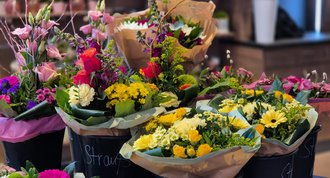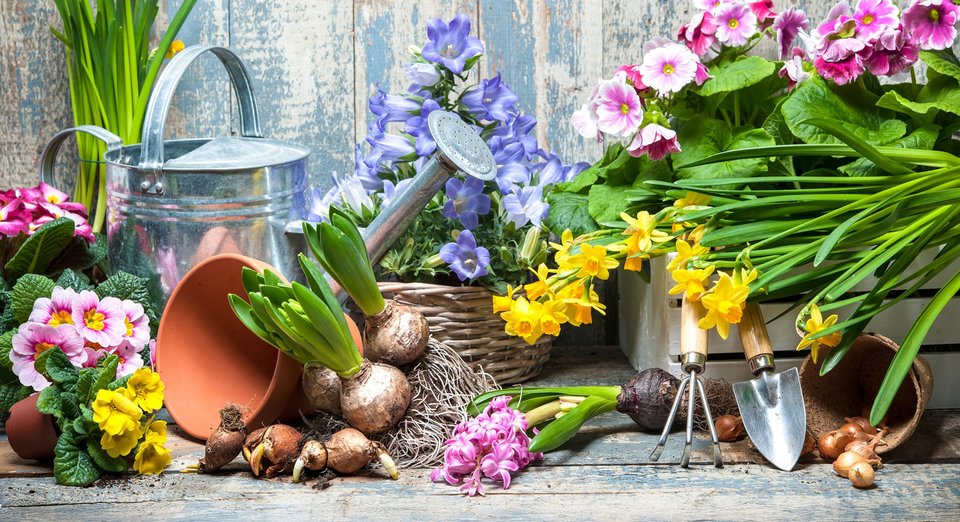
Flowers and ornamental plants are becoming increasingly important in REWE Group's product ranges. Anyone who brings colour and freshness into their home or garden pays attention to price and Sustainability. Our colleagues provide an overview. Plus: Our expert Dieter Frings, Category Management Consultant for Plants at toom, reveals seven valuable tips on how to optimise your flower range.
 Nadja Haese
Goodbye winter grey! With spring comes the desire of many plant and flower lovers to beautify their homes with fresh greenery and colourful blooms. "April is the start for our industry. There are only a few frosts left and the first cold-resistant plants can be planted," says Nadja Haese, Team Leader Support, Process & Sustainability Plants at toom. If you want to be sure that low temperatures won't kill freshly planted plants, you often wait until May, sometimes even June, to plant geraniums, summer heather or pansies. According to the Agrarmarkt Informations-Gesellschaft (AMI), these three plants have been the Germans' favourite bedding and balcony plants for years. In spring, however, Nadja Haese adds that garden and balcony owners are particularly fond of primroses and bulbous plants. "These are our top sellers at the start of the season," she emphasises.
Nadja Haese
Goodbye winter grey! With spring comes the desire of many plant and flower lovers to beautify their homes with fresh greenery and colourful blooms. "April is the start for our industry. There are only a few frosts left and the first cold-resistant plants can be planted," says Nadja Haese, Team Leader Support, Process & Sustainability Plants at toom. If you want to be sure that low temperatures won't kill freshly planted plants, you often wait until May, sometimes even June, to plant geraniums, summer heather or pansies. According to the Agrarmarkt Informations-Gesellschaft (AMI), these three plants have been the Germans' favourite bedding and balcony plants for years. In spring, however, Nadja Haese adds that garden and balcony owners are particularly fond of primroses and bulbous plants. "These are our top sellers at the start of the season," she emphasises.
The flower and ornamental plant industry is hoping that the trend will now point upwards again after a difficult year in 2024. According to AMI figures, the overall market only recorded an increase of one per cent to 8.8 billion euros last year. Growth that is purely price-driven, according to the industry association. The quantities sold fell in almost all market segments compared to the previous year. The AMI only awarded good marks for the months of March to April. In all other months, the market was at an unusually low level for ornamental plant cultivation.
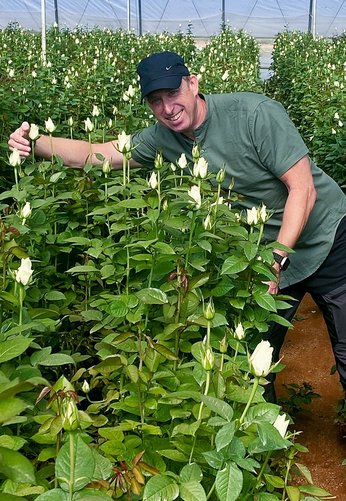 Mirko Sauerbach
This development cannot be explained by capricious weather conditions alone. Rather, suppliers of flowers and ornamental plants are feeling the effects of consumers' increased willingness to save. Uncertain about the general economy and worried about their own financial situation, many customers are also holding back when buying flowers and ornamental plants. "This is a new experience for our industry, because in the past we were able to decouple ourselves from the development of the economy as a whole. People have not let bad news stop them from bringing freshness and colour into their homes with flowers," says Mirko Sauerbach, Senior Buyer Ware Ultrafrische 1 at REWE Group and responsible for cut flowers.
Mirko Sauerbach
This development cannot be explained by capricious weather conditions alone. Rather, suppliers of flowers and ornamental plants are feeling the effects of consumers' increased willingness to save. Uncertain about the general economy and worried about their own financial situation, many customers are also holding back when buying flowers and ornamental plants. "This is a new experience for our industry, because in the past we were able to decouple ourselves from the development of the economy as a whole. People have not let bad news stop them from bringing freshness and colour into their homes with flowers," says Mirko Sauerbach, Senior Buyer Ware Ultrafrische 1 at REWE Group and responsible for cut flowers.
The sale of bouquets in REWE and PENNY stores follows different dates to the gardening season. "Our five highlights for cut flowers are Valentine's Day, Women's Day, Easter, Mother's Day and Advent," says Sauerbach. The best-selling plants in spring are tulips; they are already available in the markets from the second calendar week. In terms of the year as a whole, roses are number one. However, there is a major problem with tulips this spring. "Due to the capricious weather last year, significantly fewer bulbs were planted and harvested than usual. There have not been such adverse conditions for decades," says the REWE buyer. The shortage of bulbs is driving up prices, but customers are sensitive and are more likely to refrain from buying flowers.
The reluctance to buy garden plants is not yet as pronounced. According to AMI figures, bedding and balcony plants, shrubs, perennials, herbs and flower bulbs accounted for almost half of industry sales in 2024. Just under €4.2 billion represented an increase of just over one per cent compared to the previous year. "People who love plants and flowers but don't have a garden also try to utilise small areas, for example on their balcony," says Nadja Haese. According to her observations, plant buyers are increasingly keen to create more than just a visually attractive garden. Rather, they also want to do something good for nature, for example by creating good conditions for bees and butterflies. "Sustainability is also playing an increasingly important role when buying plants. For example, there are more questions about peat-reduced products. "We have a lot to offer in this area," says the toom expert.
A large proportion of the goods sold in the toom, REWE and PENNY stores come from the Netherlands. The neighbouring country is the world's most important trading centre for cut flowers. Potted plants, on the other hand, mainly come from domestic production or are delivered from Italy, Spain or Denmark. "And most of our roses come from Africa," adds Sauerbach.
The importance of the flowers and ornamental plants product group in REWE Group's product ranges has increased significantly in recent years. "We are increasingly thinking about new forms of presentation in the stores, investing in vases and furniture and designing our product ranges to be of a higher quality," emphasises Sauerbach. It used to be difficult to sell bouquets for more than 15 euros in food retail. In the meantime, however, customers have realised that the quality on the market is no worse than in traditional flower shops. In its 2024 annual report, the industry association AMI cites another reason why the food retail sales channel is becoming increasingly important for the green industry: "The shortage of skilled labour has led to a shift in revenue and volumes from traditional specialist retailers to the food retail sector."

An impressive range of flowers is a real eye-catcher and leaves a lasting impression on customers. Our expert Dieter Frings, Category Management Consultant Plants at toom, reveals seven valuable tips on how to optimise the design of your flower range to ensure lasting high quality and long-lasting customer satisfaction.
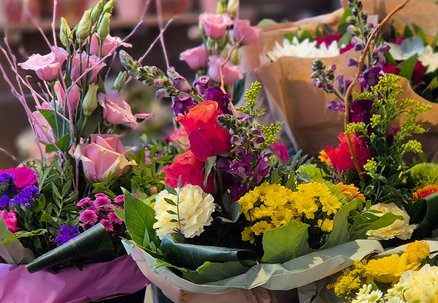
Ensure freshness on receipt of goods:
Take the cut flowers directly to a protected area to keep them fresh. Is there water in the buckets? If not, fill them with a little water, just enough so that the packaging does not get soaked.
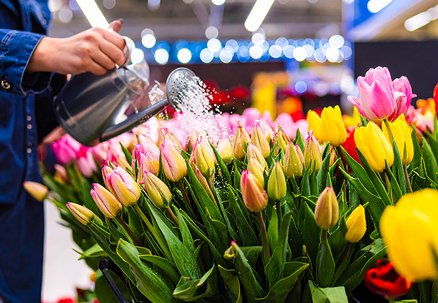 Regular inspection and care:
Regular inspection and care:
Ideally, check the flowers several times a day. Check whether they are standing in water and sorted by flower type.
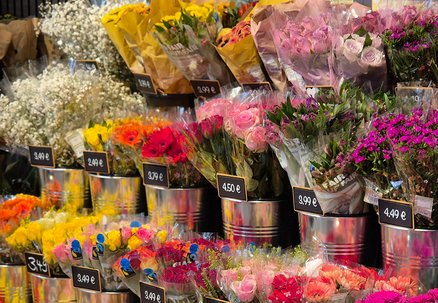 Optimise the location:
Optimise the location:
Do not place the flowers under ceiling fans or near draughts. Also avoid direct sunlight.
 Water change and pruning:
Water change and pruning:
Change the water every 2 days and, if possible, re-cut the cut flowers with a clean knife. Make sure that you water the plants from below, as flowers wilt more quickly if they get wet. Leaves can become mouldy when wet. As a general rule: keep plants moist, but not wet. The soil should be too dry rather than too moist.
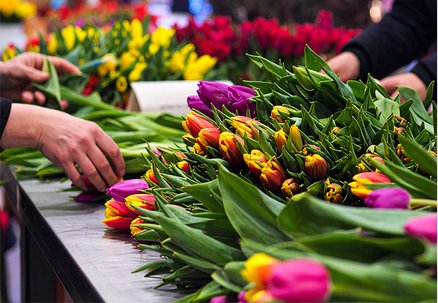 Quality management:
Quality management:
Sort out diseased or wilted flowers at an early stage to ensure high quality for our customers. Avoid waterlogging, as this causes lasting damage to the plants.
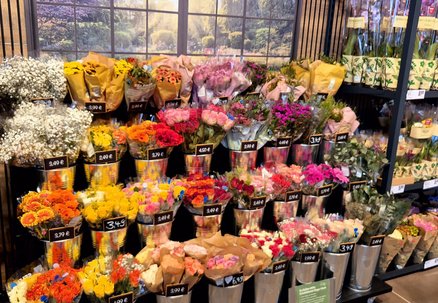 Staging:
Staging:
To present all the flowers in the best possible way, a hierarchical arrangement makes sense. This means placing large flowers at the back, small ones at the front or large ones in the centre and small ones around them. As the icing on the cake, you can place the plastic buckets in baskets or ceramic pots to create an appealing overall look.
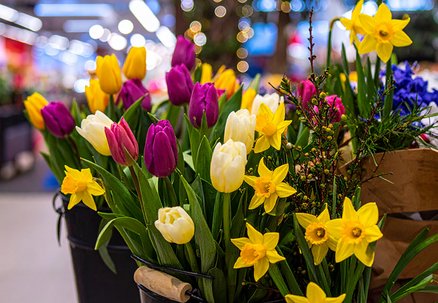 Seasonal assortment:
Seasonal assortment:
Seasonal flowers are popular with many customers. Must-haves in the spring range include tulips, daffodils and hyacinths, followed later by peonies and chrysanthemums. Then add timeless classics such as roses to the range.
Image sources: Image 2, 4, 5, 7 © KI Adobe Firefly

